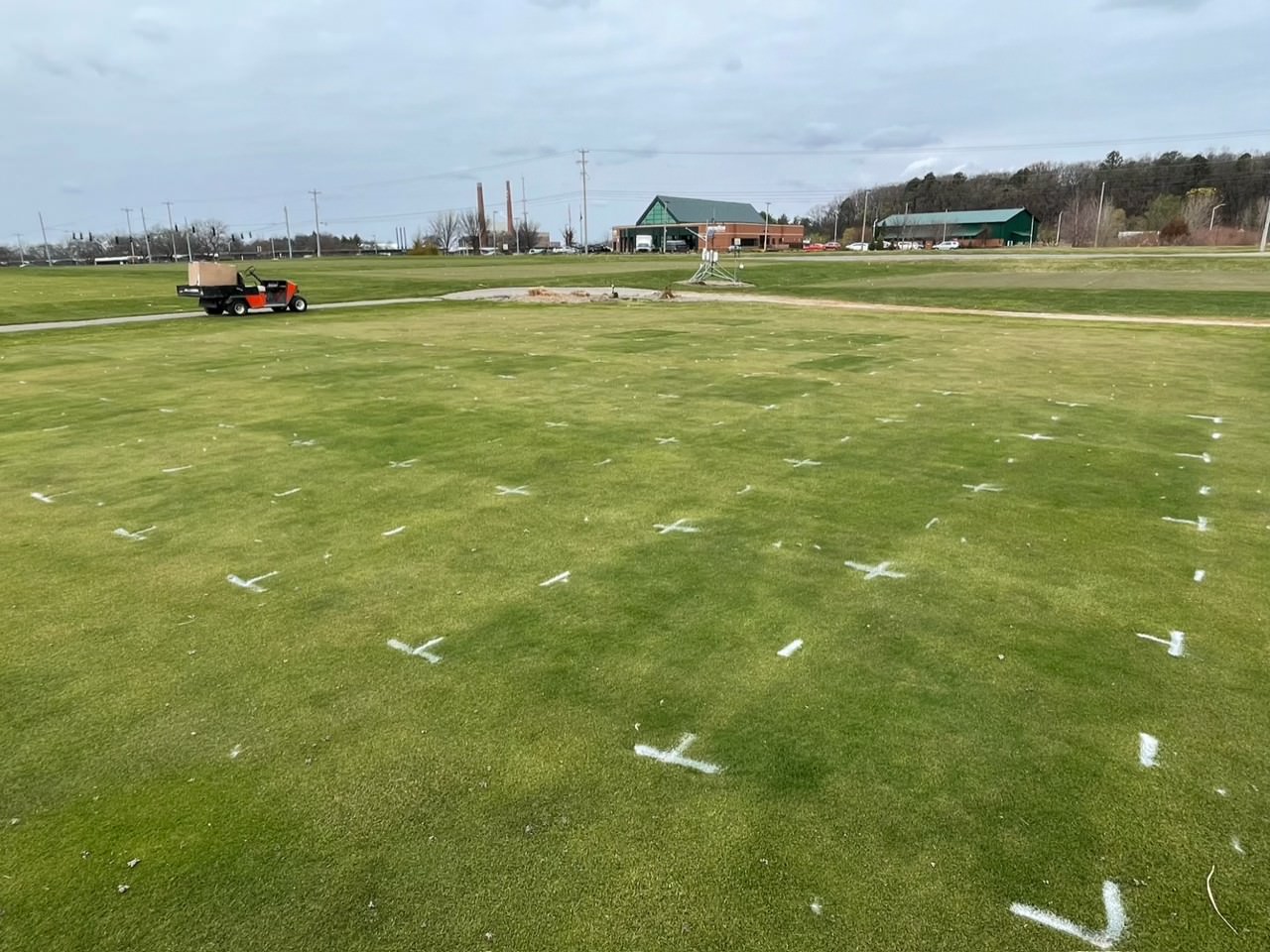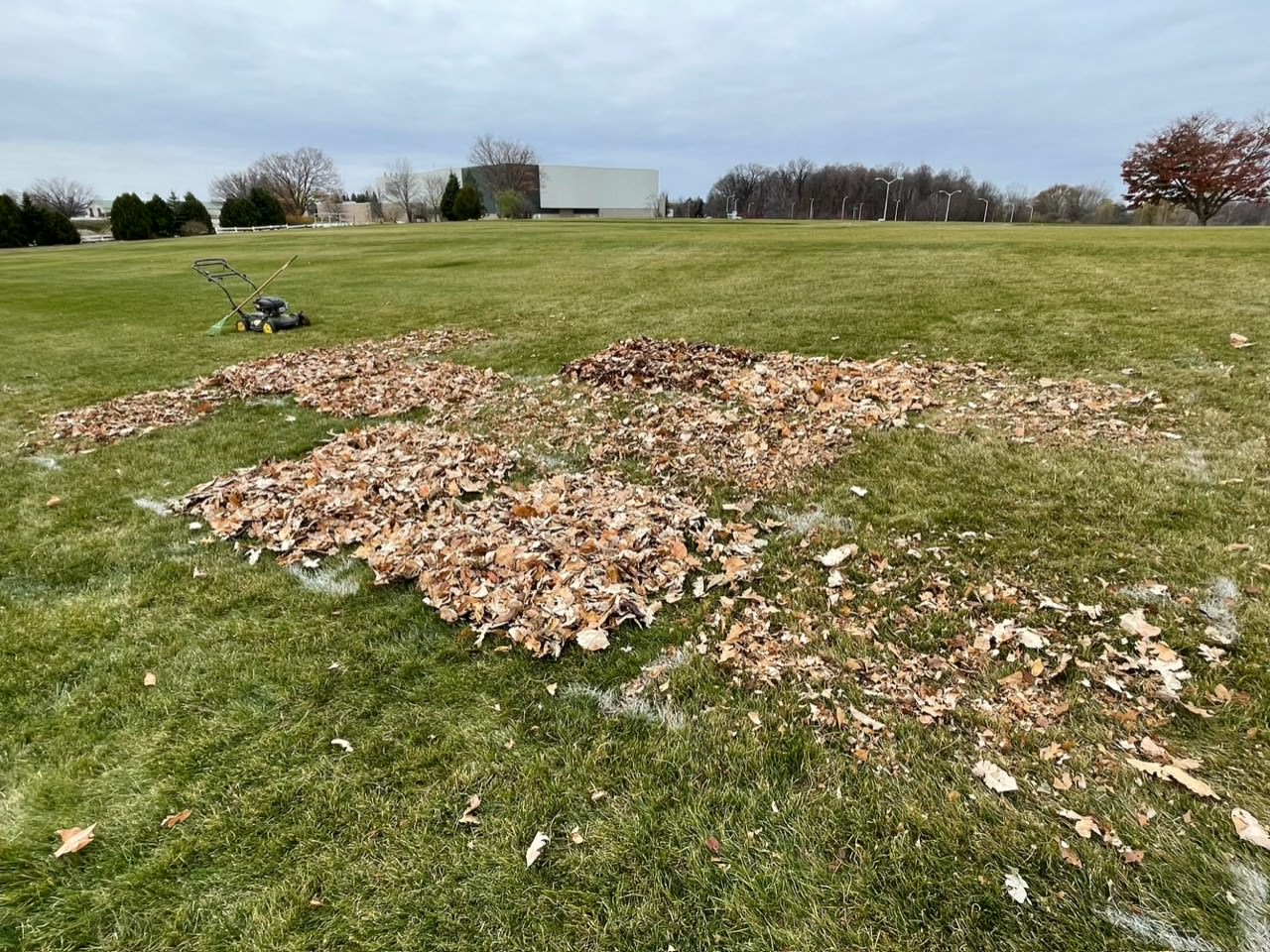November 18, 2022
By Kevin W. Frank, Michigan State University
There’s a classic weather saying in the Midwest that if you don’t like the weather today just wait until tomorrow as it’ll likely change. That is certainly true this time of year as last Thursday temperatures were in the 70s and there is snow in the forecast. With winter finally approaching we finished preparing several of our WinterTurf projects today. Both studies are being conducted along with researchers at the University of Wisconsin.
- The effects of fertility timing and rate on snow mold incidence on a creeping bentgrass fairway. The fertility timing and rate study (Figure 1) was a season-long study that included nitrogen and potassium applications that varied either by timing or rate. For the timing study, fertilizer applications were made in May, June, July, and August and the final application was made in either September, October, or November. For the rate study, applications were made in May, June, and August with the final application of different fertilizer rates made on September 15. Treatment effects on snow mold will be evaluated next spring. The plot area was covered with a permeable cover thanks to a generous donation by GreenJacket.
- The effects of tree leaf mulching and leaf removal on snow mold development in home lawns. One of the questions about leaf mulching into lawns is whether it affects snow mold development. This study was straightforward with 5 treatments (Figure 2). Mulch leaves at two depths, non-mulched leaves at two depths, and untreated control. The plot areas were then covered with a netting material to keep leaves on the plots over winter. Snow mold occurrence will be evaluated next spring.
These are just two studies under evaluation as part of the WinterTurf grant. We have also prepared two putting greens for spring establishment studies next year.

